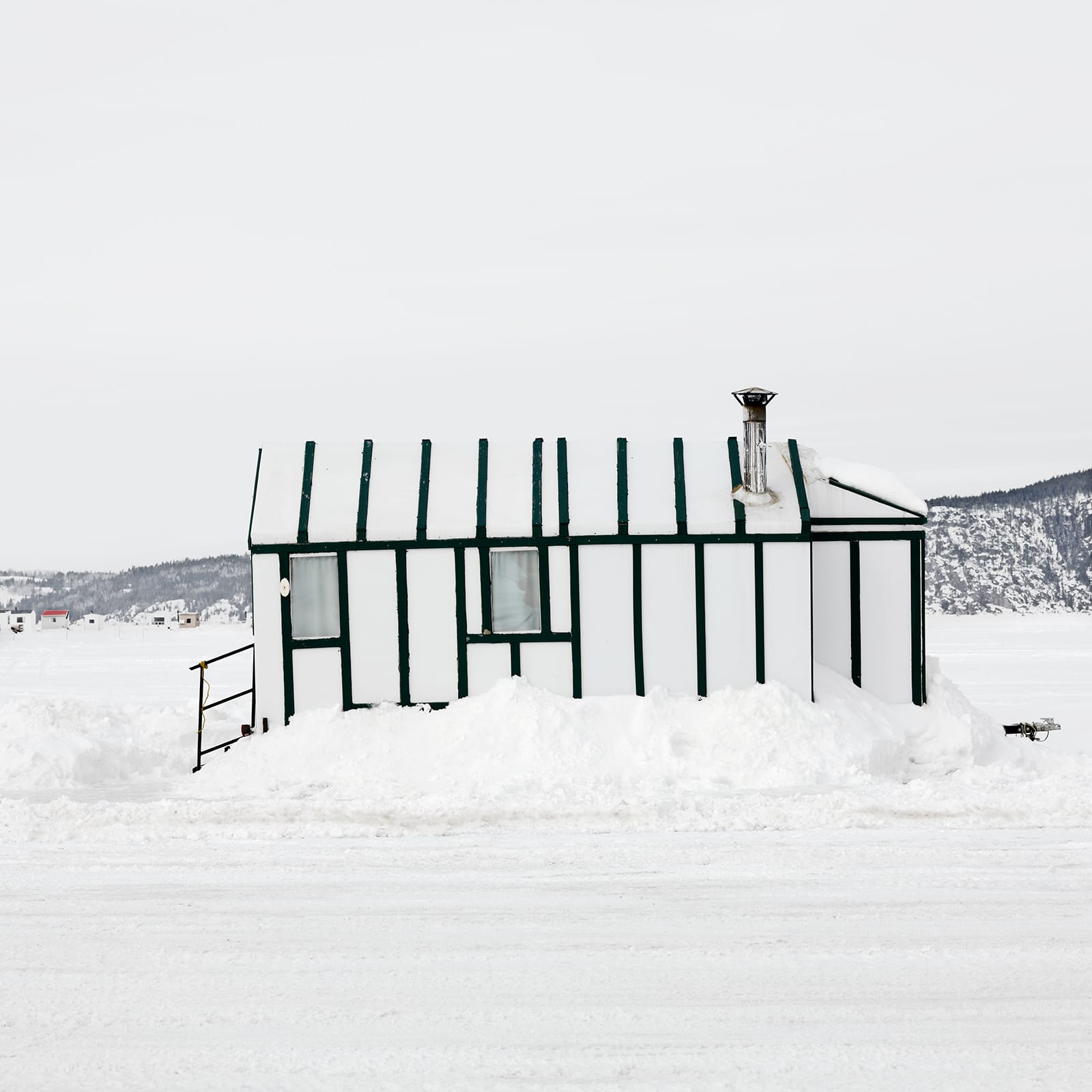This post was originally published on Colossal

“Ice Hut GRID #6” From the Series ‘Ice Huts’ (2007-2019). All images © Richard Johnson Photography, Inc., shared with permission
Starting in late December and January when the temperatures stay consistently below freezing, bodies of water in the northern United States and Canada begin to freeze. As the ice reaches thicknesses over four inches, it becomes safe to walk on, and at more than five inches, it is usually safe for snowmobiles. Then, in droves, residents take to the lakes. Ontario’s 279-square-mile Lake Simcoe, for example, draws more people for its ice fishing than any other lake in North America, attracting upwards of 4,000 huts each year.
The colorful villages of hand-built structures that populate many popular spots during the coldest months caught the eye of Toronto-based architectural photographer Richard Johnson (1957-2021), who captured hundreds of the structures, from the artistic to the ad-hoc, in a series of bold portraits taken between 2007 and 2019. “I have always been fascinated with small structures,” Johnson said. He continued:
My earliest recollection of shelter was as a 6-year-old growing up in Trinidad. It was a guard house for our neighbour. No more than three walls and a lean to roof, it was a simple solution to shade the harsh sun and protect from tropical rains. These shelters, built by individuals with available materials, inspired me to take notice.
The photos highlight a wide array of materials and design choices that comprise the seasonal communities, from plastic tarps wrapped around poles to one-person sheds to comparatively sophisticated board-and-batten buildings. Johnson captured the individual personality of each hut in a square format, framed by a snowy landscape, with their inhabitants typically out of view. Small enough to be towed onto the ice with a vehicle, some versions boast unique decor and enough space to hold several people, a small stove, and basic provisions.
See more on Richard Johnson Gallery’s website, where prints are available for purchase.
“Ice Hut #356” (2010), La Baie Des Ha! Ha!, Saguenay River, Québec

“Ice Village #178” (2016), Péribonka, Lac Saint-Jean, Québec

“Ice Hut GRID #11”

“Ice Hut #220” (2009), Killarney Beach, Lake Simcoe, Ontario

“Ice Hut #137” (2008), Gilford, Lake Simcoe, Ontario

“Ice Hut #998” (2017), New Liskeard, Lake Timiskaming, Ontario

“Ice Village #47” (2013), Renforth, Kennebecasis River, New Brunswick

“Ice Hut #946” (2016), Péribonka, Lac Saint-Jean, Québec
Do stories and artists like this matter to you? Become a Colossal Member today and support independent arts publishing for as little as $5 per month. The article Framed by Frozen Lakes, Richard Johnson’s ‘Ice Huts’ Capture Wintertime Communities in Canada appeared first on Colossal.





0 Comments